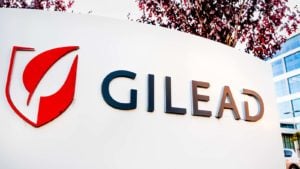It’s not surprising the Nasdaq is doing so well. Because it is a modified market cap-weighted index, bigger companies have a larger impact on its performance.
The biggest six stocks are all worth more than $1 trillion dollars, and Tesla (NASDAQ:TSLA) the seventh largest, is within striking distance at just under $900 billion.
That means the Magnificent Seven stocks from last year all have an outsized say in how well the index is doing this year. Considering all but the electric vehicle manufacturer are up by double-digit percentages €” in fact, they are up by 20% or more €” it may be more remarkable that the Nasdaq 100 isn’t up even more.
It also means finding undervalued Nasdaq 100 stocks isn’t easy. Some 60% of all index components are in the green but not all are doing better than the index itself.
With only a quarter of the components doing as well or better, it suggests there are still quite a few discounted stocks to buy. Below are three that deserve a closer look by investors.
Charter Communications (CHTR)

Cable and telecom provider Charter Communications (NASDAQ:CHTR) is one of those laggards. Shares are down almost 20% in 2024 but is is poised for a turnaround.
The ending of the Affordable Connectivity Program on June 1 weighed heavily on Charter’s performance. The federal program offered a $30 subsidy to make broadband more affordable for households and fully 16% of Charter’s customers, some 5 million households, benefited from the program.
As the second-largest cable provider in the U.S., Charter is still driving market share gains and strong, recurring cash flows by limiting price increases on its services. Because it operates at scale, it can improve cost efficiency that will flow through to its bottom line.
While holding the line on pricing can attract customers with little loyalty, since Charter upgraded its network to meet the demands of its customers’ broadband needs €” even more so than telecom providers like Verizon (NYSE:VZ) €” it gives the company competitive advantages over the competition.
As the ACP wind down recedes further in the rearview mirror, and with lower inflation Charter raises prices, expect margins to improve and CHTR stock to grow.
The telecom and wireless provider trades at 9 times trailing earnings and estimates, goes for a fraction of its sales and 15 times its free cash flow. It makes Charter Communications an undervalued Nasdaq 100 stock worthy of consideration.
Gilead Sciences (GILD)

Drug-maker Gilead Sciences (NASDAQ:GILD) also is having a rough go of it this year. Shares are down 15% year-to-date as competitive pressures mount against its oncology portfolio.
Trodelvy, for example, is used to treat rare, “triple-negative” breast tumors and was approved to treat more common metastatic breast cancers that met certain conditions. However, Enhertu from AstraZeneca (NASDAQ:AZN) and Japan’s Daiichi Sankyo (OTCMKTS:DSNKY) showed greater promise.
Still, Gilead has a strong pipeline of drugs for HIV and Hepatitis C HIV therapy sales rose 4% in the fourth quarter to $4.3 billion while liver disease treatments jumped 9% to $737 million. The market for HIV treatment is growing at low-single-digit rates but prevention therapies are rising at double-digit rates. That provides a strong catalyst for growth for the biopharmaceutical.
Gilead Sciences stock trades at 9x next year’s earnings and at just 10 times FCF. Earnings are expected to nearly double next year, making the drugmaker a good candidate for an undervalued Nasdaq 100 stock to buy now.
Costco (COST)

Costco (NASDAQ:COST) seemingly doesn’t fit the bill as a discounted stock. Its shares are up 30% year-to-date and over 53% higher for the past 12 months. Those are growth stock-type numbers, not value stock. Yet Costco is a company simply running ahead of its valuation. There is significantly more runway for the warehouse club to take off.
Most notable is its just-released announcement that it will be raising its membership fees by $5 to $65. Executive memberships will rise $10 and go from $120 to $130. This long-awaited development will provide an immediate boost to Costco’s topline numbers and will readily flow through its income statement to the bottom line.
Memberships are where the retailer derives the greatest portion of its profits. They essentially cost it nothing and immediately boost profits. Because of the discounts shoppers receive on the bulk item purchases they make, the modest increase in fees is not a deterrent. It will lose few if any members because of the hike. It is something Costco does every five or six years on average.
Because of inflation and the impact its had on households, Costco has refrained from raising its membership fee for seven years. Despite the significant share price gains the wholesale club has enjoyed, shares still trade at less than twice sales making it the third undervalued Nasdaq 100 stock to buy.
On the date of publication, Rich Duprey did not hold (either directly or indirectly) any positions in the securities mentioned in this article. The opinions expressed in this article are those of the writer, subject to the InvestorPlace.com Publishing Guidelines.
On the date of publication, the responsible editor did not have (either directly or indirectly) any positions in the securities mentioned in this article.
Rich Duprey has written about stocks and investing for the past 20 years. His articles have appeared on Nasdaq.com, The Motley Fool, and Yahoo! Finance, and he has been referenced by U.S. and international publications, including MarketWatch, Financial Times, Forbes, Fast Company, USA Today, Milwaukee Journal Sentinel, Cheddar News, The Boston Globe, L’Express, and numerous other news outlets.
